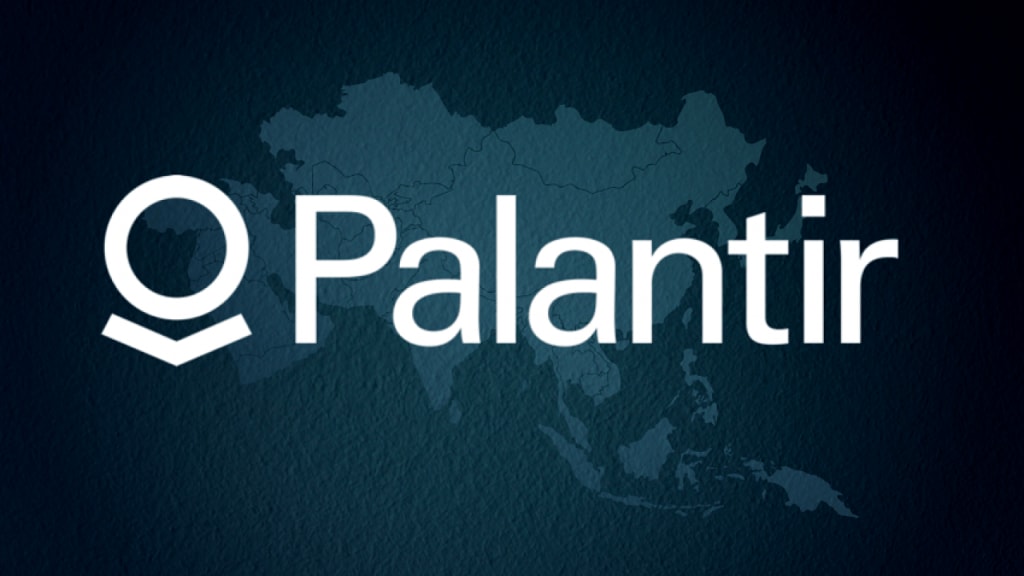What's up with Palantir (PLTR)?
Will Palantir be a big data success story?

Palantir (PLTR) is a software company that generates revenue by selling subscription and maintenance contracts giving companies access to Palantir software. An example of the software in action has been the response to the Covid 19 Pandemic. Palantir software has been crucial in tracking the Covid-19 response; working with the U.S Department of Health and Human Services and the U.K counterpart. In addition to Government contracts, Palantir has been expanding their corporate client base. Customers of Palantir include IBM, Amazon, Airbus, US Army and US Navy. Integration and ultimately utilization of data are the key deliverables of Palantir Technologies. PLTR is a compelling company in the big data sector some reasons to investigate an investment in PLTR are as follows:
1. Strong Revenue growth. $742 million in 2019 compared to $1.1 billion in 2020 represents a 47% increase in revenue year over year according to the most recently published 10-K Financial Statement. This revenue growth is bullish.
2. Share based compensation muddies the waters on PLTR profitability. PLTR has yet to turn a profit, yet if you factor in Share based compensation PLTR is profitable on a cash basis AND employees demonstrate strong belief in the company if they are willing to accept share based compensation at these levels.
3. PLTR is being bought by big institutions, namely Cathie Wood’s ARK Investment Fund. Buying by institutions is imperative to drive the stock price upward.
Revenue Growth:
Palantir (PLTR) generated over $1 billion in sales for the year ended December 31, 2020. This was a 47% increase in annual sales compared to sales of $742 million in 2019. Revenue is generated from two business segments, Government and Commercial. Revenue increased from $345 million in 2019 to $610 million in 2020 for the Government segment a 77% increase. The Commercial segment grew from $397 million to $482 million in the same period, 22% growth. The core business for Palantir (PLTR) has been on the Government side so this is promising to see such rapid growth for the segment. Palantir (PLTR) started primarily as a government solution so the expansion into Commercial applications is relatively new but has so far been promising for the future of Palantir (PLTR).
Something to be wary of is Palantir has 139 customers but generates 61% of total revenue from the top 20 customers. This is either an advantage or a disadvantage depending on the product Palantir is putting forward. Concentrating a customer base means that if customers start leaving, losing only a few big customers can be a huge hit to Palantir. So far customers appear pleased; this is demonstrated by an increase in average revenue per customer from $5.6 million to $7.9 million between 2019 and 2020, a 41% increase according to the most recent 10-K Financial Statement. Customers have been expanding usage of Palantir technology which accelerates Palantir’s revenue growth.
Share Based Compensation:
Palantir (PLTR) breaks my biggest rule regarding investability, they aren’t profitable! For the year ended December 31, 2020 Palantir disclosed a staggering loss of $1.16 billion. I would run for the hills if a company disclosed that they generated $1 billion in revenue but at the end of the day lost $1.16 billion! That equates to spending almost $2 for every $1 you bring in, this is not a winning equation. A deeper dive into the financials tells a different story vis-a-vis Share based compensation.
Share based compensation is essentially a way for companies to pay employees partially in shares of stock instead of exclusively cash. For example an employee may agree to take on a stock option payment plan in addition to salary. This strategy is imperative to Palantir because talent in the software industry is extremely expensive. Having a way to incentivize employees in addition to cash salary is crucial to retaining top talent in the industry. Share based compensation also aligns the objectives of both the company and the employee. For example stock option plans have a “vesting” period which is a period of time the employee must work at the company before the stock options 100% belong to the employee. If you have a 401K you likely are familiar with a vesting period. During that vesting period in a 401K the employer match portion of the 401K is not available to the employee. This vesting is similar to how Options vesting works.
The no cash payment to employees related to share based compensation means that profitability of Palantir needs a second look. Total share based compensation for 2020 was listed on Palantir’s Statement of Cash Flows as $1.27 billion for the year ended December 31, 2020. The $1.27 billion can be added back to the $1.16 billion net loss resulting in a profit ON A CASH BASIS for the year ended December 31, 2020 of $110 million. Having an operating profit is a necessary part of stockholders making money from an investment. Palantir is profitable on a cash only basis making the investment more palatable for me today.
Share based compensation is a good way to attract top talent in an industry and align employees interests with the company, but there are downsides. When a company pays employees in shares the company essentially “prints” more shares and sells them to the employee at an agreed upon exercise price. This brings cash into the company but dilutes the ownership percentage of other stockholders. For example if there are 1,000 shares outstanding and an investor holds 100 shares of the company he would be a 10% shareholder in the company. If the company distributes 500 shares to employees at a discounted price the same shareholder’s stake in the company drops from 10% to 6.67%.
Dilution of ownership is a potential risk to shareholders. At current levels I personally feel comfortable and believe the benefit of attracting great talent outweighs the risk of share dilution. I primarily believe this is not significant dilution because the company went public in September 2020. Going public is a major event with regard to Share based compensation because shares that were previously valued on a private basis and not liquid suddenly are extremely liquid because they are available for sale on the Stock Exchange. Also many compensation plans have significant vesting conditions tied to the company going public. Recognizing massive share based compensation is not out of the ordinary the year a company goes public. Therefore I am not concerned by the large share based compensation having a long term negative dilution effect. I will be tracking this figure though as there are dilution risks if this number grows.
Institutional Buying:
The truth is that big investment institutions ultimately move the price of stocks. Having healthy buying and holding by big institutions is a key I look for when investing in a company. For example, if a company is added to the S&P 500 Index this is huge news because every ETF or Hedge Fund that is tied to the S&P 500 Index has to go and buy that stock. This recently happened to Tesla (TSLA) and the stock enjoyed additional buying pressure and a run up in the stock price. Overall, it’s a good thing when big institutions are targeting a stock you invest in.
Currently institutions make up 15.65% of the ownership of Palantir stock. Institutional purchases have been accelerating with $5 billion invested so far in the third quarter compared to a net of $1 billion in purchases in the second quarter of 2021. An outspoken investor Cathie Wood has been accumulating Palantir shares in her ARK Investment Funds. So far Cathie has purchased over 37 million shares making ARK one of the largest institutional holders of Palantir. I have great admiration for Cathie Wood, her funds have been beating the market by investing in disruptive technologies. A stamp of approval from Cathie goes a long way in my personal investing strategy. With institutional ownership of Palantir (PLTR) increasing I personally am bullish on the long term growth outlook of the company.
Conclusion:
I like the stock. Revenue growth is compelling at 47% growth demonstrated in the most recent 10-K Financial Statements. I look forward to seeing what the rest of 2021 brings for the company. The share based compensation plan is overall an encouraging sign. Employees accepting stock of the company as compensation shows a belief of internal personnel in the long term success of Palantir. There are dilution of share risks with a heavy share based compensation plan. Definitely something to keep in mind, but at current levels I believe benefits outweigh risks considering the company went public in 2020. Finally, institutional buying in the company has been accelerating, a healthy sign that the stock is being accepted in the investing community. Institutional buying is a bullish sign as ultimately institutional investors have the most clout in driving stock prices. I look forward to following the Palantir story and see a potential for a bright future ahead.
*This article is not investment advice. I may be invested in the securities mentioned in this article but I have a unique investing ideology and risk tolerance that is not necessarily suitable for all investors. Please talk to a Financial Advisor or complete due diligence before making investing decisions.
About the Creator
Enjoyed the story? Support the Creator.
Subscribe for free to receive all their stories in your feed. You could also pledge your support or give them a one-off tip, letting them know you appreciate their work.






Comments
There are no comments for this story
Be the first to respond and start the conversation.